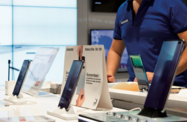Morocco: High-speed growth
 En Français
En Français
Under its national strategy for information and digital economy, Digital Morocco 2009-13, the country has seen the number of people connected to the internet rise to around 49% of the population. This is one of the highest rates in North Africa and more people are set to be connected with the roll out of 4G technology and fibre-optic networks later this year.
Launched in 2009 by the Ministry of Industry, Trade and New Technologies, the programme was based around four strategic priorities: social transformation through information technology (IT); orientating public services towards users; computerising small and medium-sized enterprises (SMEs); and developing the national IT industry.
As a result, the country has seen overall internet subscriptions grow by 300% in less than three years. 3G subscriptions have been the main drivers for this rapid expansion, though demand for greater speed and bandwidth, particularly in the business sector, has also increased the number of ADSL subscriptions, which had slowed following the introduction of 3G technology in 2006.
According to the National Telecommunications Regulatory Agency (L'Agence Nationale de Réglementation des Télécommunications, ANRT), some 98% of all Moroccan businesses with more than 10 employees were equipped with computers in 2010 and 91% of those businesses had internet access.
Indeed, developing IT in the business sector has been one of the country’s main priorities as it looks to develop its offshoring industry. The establishment of the investment zones of Casablanca Technopark (Casanearshore) and Rabat Technopolis are testament to the commitment to creating job growth and attracting investment into the sector.
Both Casanearshore and Rabat Technopolis are currently home to more than 100 firms. The former is built on 53 ha of land and has 270,000 sq metres of office space, which is due to be expanded by a further 153,000 sq metres by the second half of 2012. Technopolis, meanwhile, is built on a 107-ha site, which will eventually be expanded to 300 ha, and has 300,000 sq metres of space for offices and services. Major international companies, such as Dell and BNP Paribas, have already established themselves in these zones.
The first phase of another investment zone, Fez Shore, opened in January 2012 on a 20-ha site that will eventually provide 130,000 sq metres of office space. Additionally, an offshoring zone in Tetouan is scheduled to begin operations in the second quarter of 2012, while another in Oujda in eastern Morocco is due before the end of 2012. Three more zones, in Agadir, Marrakech and Oujda, are currently under study.
Increased attention has also been turned towards start-ups in IT via the Morocco Numeric Fund. Established in 2010, the fund’s objective is to provide financial support to businesses and start-ups in the IT sector. Technology start-ups generally have difficulty obtaining financing, as Moroccan banks focus mainly on supporting larger companies and SMEs.
As the number of new companies increases, ADSL subscriptions are likely to follow suit. This trend seems particularly likely for businesses requiring fixed broadband technology to ensure efficiency. Expanding access to fixed broadband outside the business sector may face a number of challenges, however. Key obstacles to growth are rural areas that lack electricity, digital illiteracy and limited wired phone lines for ADSL connection, with only 3.57m fixed lines in Morocco as of December 2011, down 4.9% on the previous year.
Cost is another obstacle. Although the country has developed some of the lowest prices and highest penetration rates in Africa, the cost of broadband still remains high for many Moroccans. The average monthly ADSL bill stood at Dh116 (€10.4) in September 2010, while 3G bills stood at Dh37 (€3.3).
Computer ownership is another challenge, with only 34% of households possessing personal computers. Consequently, access to the internet via cybercafés remains common, with some 76%, or 8m users, accessing the web through these public areas.
Mobile internet and 3G packages, however, play a major role in extending coverage to most segments of the population and have complete geographical coverage. As of December 2011, the number of 3G subscriptions had reached 2.59m, up from 1.37m a year earlier, and accounted for 80% of total internet subscriptions.



